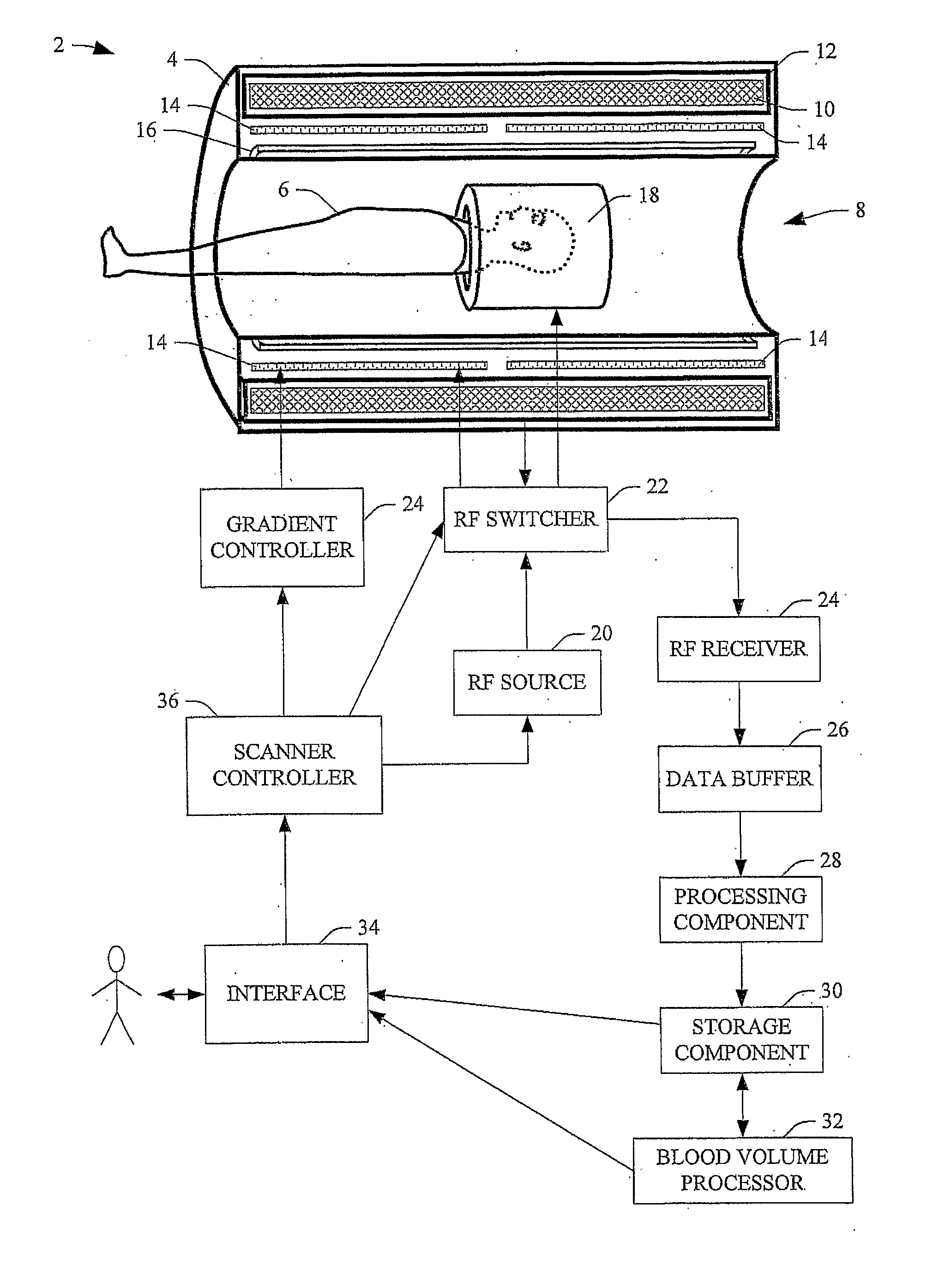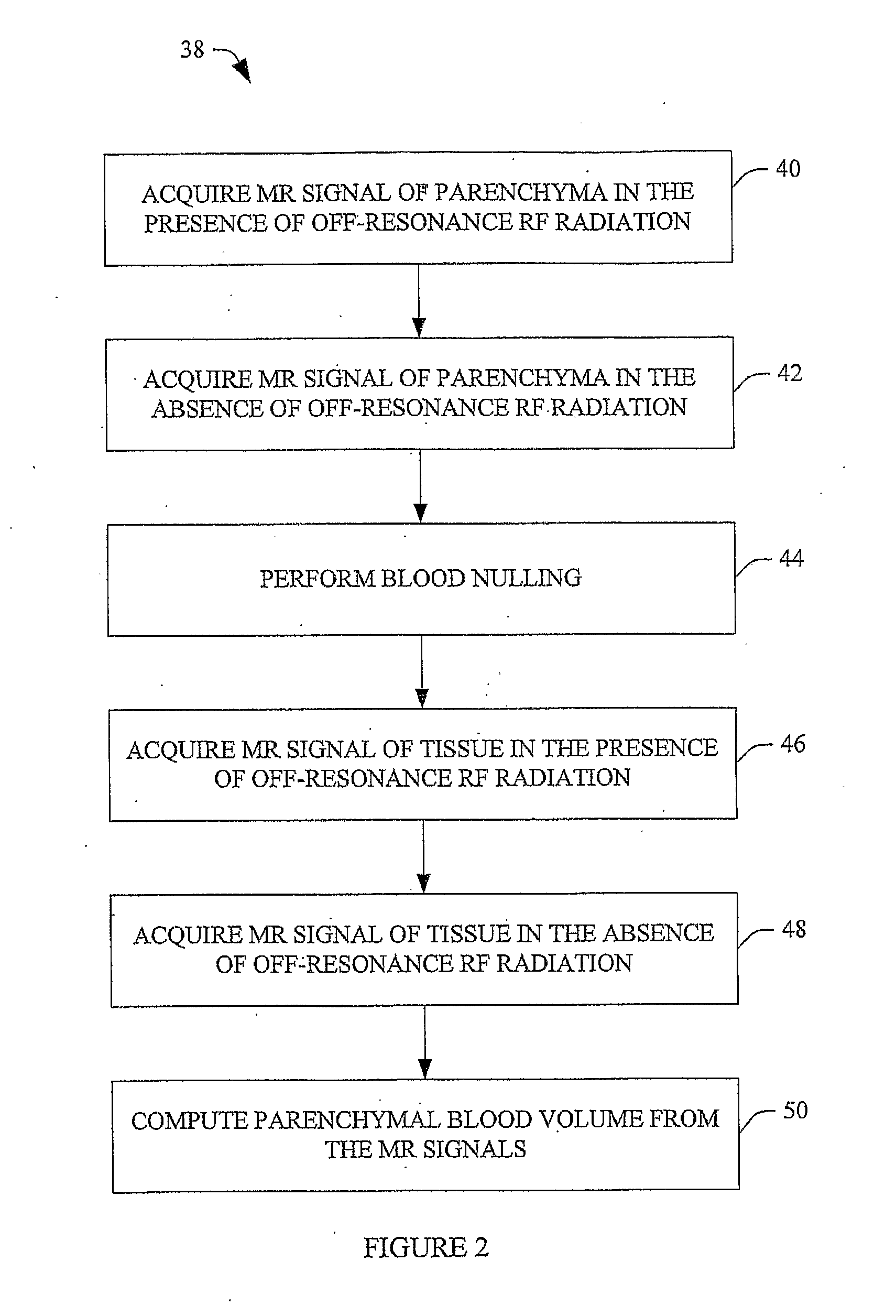Quantifying Blood Volume Using Magnetization Transfer Magnetic Resonance Imaging
a magnetic resonance imaging and blood volume technology, applied in the field of non-invasive methods for quantifying blood volume, can solve the problems of unresolved need for improving non-invasive blood volume quantifying techniques
- Summary
- Abstract
- Description
- Claims
- Application Information
AI Technical Summary
Benefits of technology
Problems solved by technology
Method used
Image
Examples
Embodiment Construction
[0026]FIG. 1 illustrates a magnetic resonance imaging (MRI) scanner 2 used to facilitate determining blood volume through magnetization transfer (MT) properties. An absolute blood volume map can be obtained by combining conventional MRI scanning techniques and using large MT-based reduction of tissue signal with respect to blood signal for non-invasive determination of absolute and relative blood volume effects in all tissues.
[0027] The scanner 2 includes a scanner housing 4. A subject 6 (or other object) is at least partially disposed within a bore 8 of the housing 4 for one or more scanning procedures. A magnet 10 resides in the scanner housing 4. Typically, the magnet 10 is a persistent superconducting magnet surrounded by cryoshrouding 12. However, other known magnets can be employed. The magnet 10 generates a magnetic field (B0) in the subject 6. Typical magnetic fields strengths are about 0.5 Tesla, 1.0 Tesla, 1.5 Tesla, 3 Tesla or higher (e.g., about 7 Tesla).
[0028] Magneti...
PUM
 Login to View More
Login to View More Abstract
Description
Claims
Application Information
 Login to View More
Login to View More - R&D
- Intellectual Property
- Life Sciences
- Materials
- Tech Scout
- Unparalleled Data Quality
- Higher Quality Content
- 60% Fewer Hallucinations
Browse by: Latest US Patents, China's latest patents, Technical Efficacy Thesaurus, Application Domain, Technology Topic, Popular Technical Reports.
© 2025 PatSnap. All rights reserved.Legal|Privacy policy|Modern Slavery Act Transparency Statement|Sitemap|About US| Contact US: help@patsnap.com



